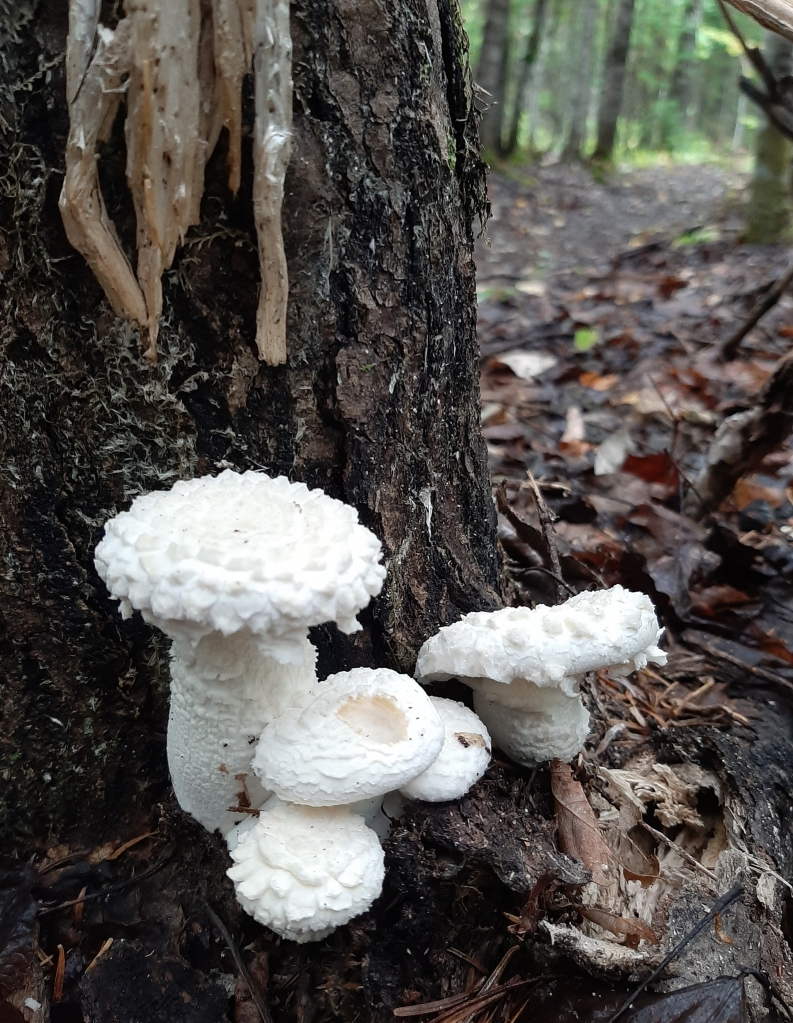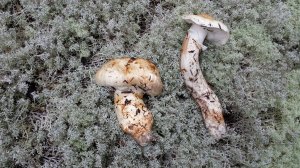
Quick post on a few of the most interesting (to me) wild mushrooms I gathered today in my neck of woods near Moncton NB. Busy foraging these days so not much identification details to pass along, I’m basically just showing off my good fortune by laying these natural wonders out for you to see in a timely fashion with their names listed below. You will need to enlarge to get a slightly better look at the individual mushrooms in this not so great photo. The wild mushrooms available in the Fall can vary greatly from day to day so next week could feature 12 different quality edible mushrooms quite easily. Enjoy your Fall foraging but be careful out there, a lot of larger creatures are on the move and some of them have arms 🙂
1 o’clock – Catathelasma imperiale
2 o’clock – Catathelasma ventricosum
3 o’clock – Ramaria rubripermanens
4 o’clock – Clitopilus prunulus
5 o’clock – Tricholoma dulciolens
6 o’clock – Hedgehog mushroom
7 o’clock – Entoloma abortivum
8 o’clock – Honey mushroom
9 o’clock – Hericium americanum
10 o’clock – Lobster mushroom
11 o’clock – Suillus glandulosus
12 o’clock – Hypsizygus tessulatus
If you like you may take a wild guess on the identity of some of the small wild mushrooms in the center of the clock. ciao
Tags: foraging NB, Maritime fall mushrooms, new brunswick, New Brunswick wild mushrooms







































